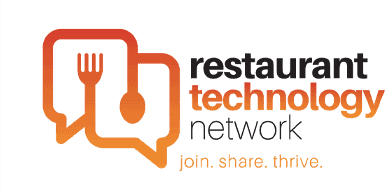With mandated closings of hotels and other businesses and the vast majority of travelers unwilling or unable to venture away from the safety of home, COVID-19 has had a chilling effect on the travel industry. Circumstances beyond anyone’s control have taken an industry that was looking forward to a positive economic climate and turned its fortunes upside down overnight.
Now, finally, the time has come in many places to begin the process of reopening doors and taking the steps necessary to welcome guests back into your rooms.
Due to the fluctuating Coronavirus numbers and resulting uncertainty, it’s become necessary to take a measured approach toward reopening a reeling economy—but how do we do that safely? How do we protect our customers and ourselves without fatally diminishing the experience of their hotel stay?
Here are a few tips to help you through the reopening process.
Safety
Certainly, the first concern of any reopening strategy needs to be a focus on the health and safety of both your guests and employees.
Different regions and different jurisdictions are naturally dealing with differing guidelines and reopening restrictions, as the pandemic strikes in one place while fading in another.
It’s vital, therefore, that you familiarize yourself with both CDC and local governmental safety guidelines to ensure compliance with all rules, regulations, and best practices.
Generally speaking, you’ll need to take measures to keep and maintain a sufficient supply of special cleaning equipment, sanitizers, masks, and gloves, arrange for the ability to temperature check all incoming guests and team members, and schedule a variety of maintenance tasks, including more frequent air conditioning service to help prevent infection spread.
You’ll also need to arrange for proper social distancing throughout your facility. This will mean including signage reminding guests to keep their distance, marking off one-directional pathways to help employees and guests minimize interactions, and instructing your staff to adhere to social distancing when interacting both with other staff members and with your guests.
Research from Longwoods International shows that “Travelers are more likely to support tourism businesses which demonstrate a clear, thorough cleaning and hygiene plan (43%), which test staff and require the use of PPE by staff (34%), and those that have controls on social distancing at the business (34%).”
The more you can do to improve the safety of guests and employees (and reassure them of the same) the more success you’re likely to have welcoming them back when they’re finally ready (or face the need) to travel.
Contactless service
One thing that COVID has gotten us all used to is the idea of “contactless” service. The more businesses are able to provide contactless service, without diminishing the value of that service, the more successful they’ll ultimately be.
For example, when it comes to dining facilities and services in your hotel, technology solutions like those from OneDine can help efficiently and quickly serve customers with a leaner workforce and in a contact-free way that keeps everyone safer.
With OneDine, patrons can check-in to your dining service via their own mobile device. They can use that device to order without waiting for overworked wait staff to get to them. They can easily pay, split the check, or pay per item. They can do all this on their schedule and from the convenience of their table, their room, or even poolside.
The OneDine platform can even use customer-entered profiles and purchasing histories to provide personalized offerings and menu suggestions tailored to each individual patron. It’s the ideal way to keep guests safer, while also enhancing the guest experience.
Personalized and proactive
Yes, much of the hotel experience will need to be adjusted in response to COVID-19, but the basic goal remains the same: providing a comfortable, enjoyable, memorable experience for each guest. And there’s no reason all of these sanitary and social distancing measures have to negatively affect that goal.
A proactive redesign of both public and private areas can help guests socially distance without the need to constantly maintain awareness of the movements of others in relation to themselves.
Providing a comfortable in-room workspace complete with all the necessities can remove the need to work in a shared Business Center. A redesign of lobby, restaurant, and other public spaces to naturally redirect traffic patterns, separate seating areas, and even erect barriers between those areas can allow guests to enjoy common areas without having to expend undue effort and attention toward responding to the behaviors and proximity of others.
Tools like those mentioned above can also be helpful in tailoring all aspects of the hotel experience to each individual guest, as opposed to adopting a one-size-fits-all approach, especially when it comes to repeat customers.
Extra towels? A room with a view? A quiet location? A preference for later maid service? A favorite nightcap delivered to their room?
Every guest has their own quirks and preferences. The more you can document those preferences and provide them the next time without having to be asked, the closer you come to creating an enduring customer relationship.
COVID-19 will certainly change many aspects of hotel management and customer service, but the basics of customer satisfaction remain the same. Altered sanitary and distancing guidelines need not detract from a memorable guest experience. It just might require a bit more effort and imagination on your part.





